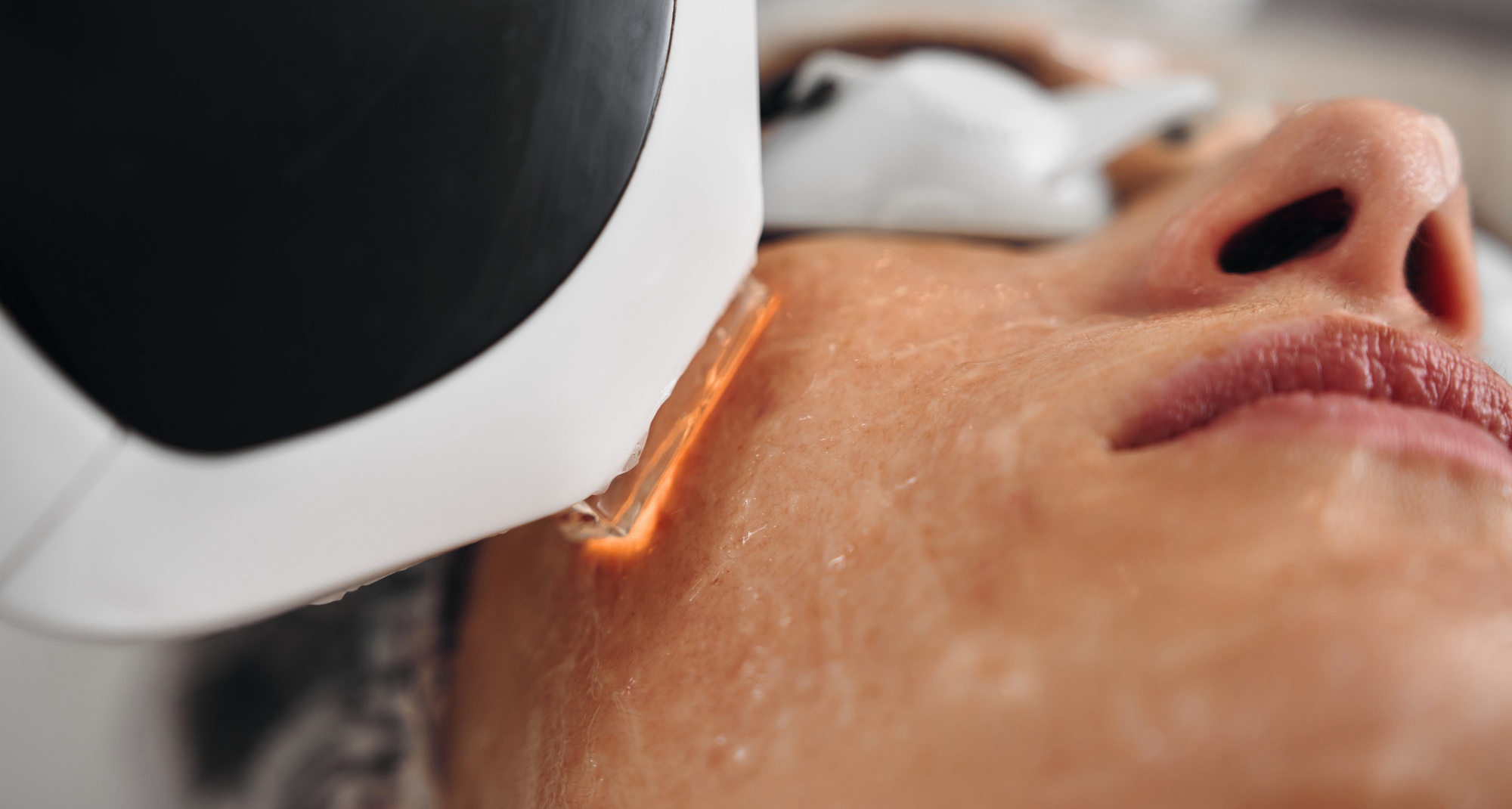We all want skin that’s radiant, even-toned, and healthy-looking—but sometimes sun damage, broken capillaries, pigmentation, and early signs of aging get in the way. That’s where Intense Pulsed Light (IPL) Therapy comes in. It’s a non-invasive, light-based treatment that harnesses scientific principles to help restore and rejuvenate your skin.
Let’s break down how it works, what happens during treatment, and why it’s so effective.
What Is IPL?
- IPL (Intense Pulsed Light) is a light therapy treatment that uses broad-spectrum light rather than a single laser wavelength. That means each flash of light includes multiple wavelengths.
- The device filters out certain wavelengths, usually very short (like ultraviolet) or too long, so the light energy delivered is safer and more precisely targeted.
Key Science: Chromophores & Selective Photothermolysis
- IPL works based on something called selective photothermolysis. Fancy phrase, but here’s what it means:
- Your skin contains chromophores — molecules that absorb light of specific colors/wavelengths. The most relevant here are melanin (pigment in your skin, freckles, spots), hemoglobin (in blood vessels), and sometimes water in skin tissue.
- The filtered light pulses are absorbed by those chromophores. When they absorb the light, they heat up. That heat then causes controlled damage or disruption to the pigmented cells or blood vessels, depending on the target.
- The body’s natural healing processes then clear out the damaged pigment or vessels, and also stimulate collagen production in deeper layers of skin. Over time this leads to more even pigmentation, reduced redness, smoother tone and texture.
What Happens During an IPL Session
Here’s a rough step-by-step of what you can expect, from the physics to the feel:
- Consultation and Skin Assessment
Your provider evaluates your skin type, concerns (redness, sun spots, broken capillaries, pigment blotches, etc.), and decides on appropriate settings—wavelength filters, pulse duration, intensity. Skin type matters because darker skin can absorb more light and be at higher risk of hyperpigmentation. - Prep
The treated area is cleaned; sometimes a cooling gel is applied or built-in cooling features are used to protect the outer layer (epidermis) and increase comfort. Eye protection is used. - Light Pulses Delivered
The device sends pulses of light through the skin. You may feel a snapping or mild heat; comparisons often say something like a rubber-band snap. Because pulses are controlled and light is filtered, damage to surrounding tissue is minimized. - Post-Treatment Healing
After treatment, you’ll often see redness, maybe slight swelling; brown pigmented spots may darken initially and then flake off over several days. The body’s immune system helps clear damaged tissue and pigment. All this while deeper skin layers are stimulated to build new collagen. - Multiple Sessions Often Needed
Because skin concerns often involve many spots, vessels, or deeper pigment, you’ll likely need several of these sessions spaced out (often 3-6 treatments, about 3-4 weeks apart) to get optimal, lasting results.
What Types of Skin Concerns IPL Can Address
Thanks to its ability to target different chromophores, IPL is versatile. Common concerns treated include:
- Sun spots, age spots, freckles, and overall pigmentation irregularities (melanin‐related)
- Redness, broken capillaries, rosacea, broken facial blood vessels (hemoglobin‐related)
- Early signs of photo‐aging: fine lines, uneven texture, pore size, dullness
- Sometimes acne scars or mild acne, especially issues of discoloration after acne or mild inflammation.
Limits, Safety, and Realistic Expectations
- IPL is non-ablative, meaning it doesn’t remove the top layer of skin like more aggressive lasers or resurfacing. That means less downtime, but also somewhat gentler results.
- Side effects are usually mild: redness, mild swelling, temporary darkening or flaking of pigment spots, perhaps some sensitivity. It’s vital to avoid sun exposure both before and after treatment, use sun protection, and follow provider instructions.
- Because skin types differ in how much melanin they have, and how reactive they are, IPL settings must be adjusted carefully. Some skin tones are more sensitive to pigment changes.
Why IPL Delivers Visible Improvement Over Time
Thanks to the combination of selective destruction of pigment or vessels + stimulating collagen + helping the skin’s renewal mechanisms, IPL tends to show gradual improvement: skin tone looks more even, discolorations fade, redness reduces, texture improves, while skin gains more radiance. And because the treatment is gentler, you can often return to most of your usual routine quickly.
The “light + healing” combo means results often accumulate over several treatments, then maintenance helps keep them. Patience plus good skincare (especially sun protection) go a long way.
IPL at Privvy Modern Health — Your Skin, Elevated
At Privvy Modern Health in Chico, CA, we offer personalized IPL Therapy tailored to your skin’s unique needs and goals. Whether you’re dealing with sun damage, pigmentation, redness, or early signs of aging, our skilled team will help you understand what IPL can—and can’t—do, create a treatment plan that fits you, and support you through recovery.
To find out whether IPL is right for your skin, give us a call at (530) 309-0671 or click the Request Appointment button below to request your consultation. Your clearer, more radiant skin journey could start today!




